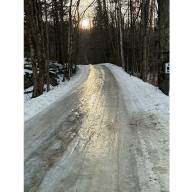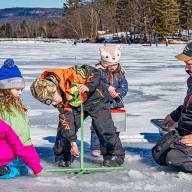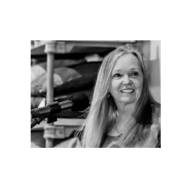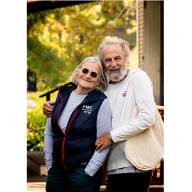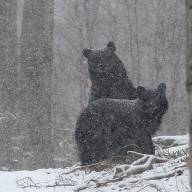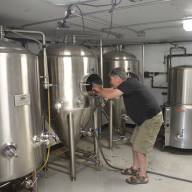This June, Spring Hill School will celebrate its 40th year running as an independent, nationally-accredited preschool in Waitsfield.
As part of the school’s annual fundraising efforts, there are two ticketed events coming up. The first is a dance party called “The Boogie” on Saturday, June 1, from 6 to 10 p.m. at Bliss Ridge Farm in Moretown. That event will feature two bands – Al’s Pals and The Grift. The second, held on Sunday, June 2, at 4 p.m. at Lareau Farm in Waitsfield, is a show put on by Modern Times Puppet Theater called “The Perils of Mr. Punch: Let’s Agree to Disagree.” That event will also include a 40th birthday surprise.
What started as a small family-owned day care center in the late 1960s has become a licensed nonprofit preschool offering morning and afternoon programs for about 36 kids annually. Spring Hill School (SHS) director Kira Harris said that most students spend two days a week in their local public school, attending SHS for at least some of the remaining weekdays.
CHARTING A COURSE OF STUDY
Laurie (Gallagher) Shelton started the preschool in 1984 after her mother Earline Marsh operated a day care out of the house for several years. In 1993, Shelton, along with then-teacher Laura Brines, joined a delegation of Vermont educators in touring municipal preschools and infant-toddler centers in the Northern Italian city Reggio Emilia. They learned about an approach to early childhood education that centers the needs and interests of the child, which took off in the aftermath of World War II when there was a strong ethos to rebuild – especially in more democratic ways. “There was this idea of starting over in a fresh way,” Harris said.
That educational approach became central to SHS. Over the years, Harris continued to take trips to Reggio Emilia to learn more – including a trip with SHS teacher Laura Mongeon and two Waitsfield Elementary School teachers in 2014. Meanwhile, SHS became accredited through the National Association for the Education of Young Children in 1995, then incorporated as a nonprofit organization, which purchased the schoolhouse and renovated it. The board also leased a half-acre of land from local property owners and created a forested play area, which was later gifted to the school.
Harris became the school’s third director in 2005, following Laura Brines and Shelton. While she was exposed the Reggio Emilia Approach in prior teaching experiences, SHS was the first place where she encountered it as an underlying paradigm of the school, embraced fully. Still, Harris said that the very essence of the philosophy is to avoid following any rules in a rigidly prescribed way. “We make up what we do,” she said.
LETTING KIDS LEAD
One of the most defining parts of the Reggio Emilia Approach is the notion of “emergent curriculum” – a practice that builds curriculum in an ongoing way, based on what kids are interested in at the moment. SHS teachers – of which there are five, including Harris, described their work as listening to kids, watching where their curiosities land, and providing various resources that might inspire their explorations further.
Teachers Naomi Alfini and Anna Church described what that can look like. Last fall, they said, students got curious about caterpillars while encountering them outside. They brought one indoors to observe, making a home for it in a windowsill near the school’s pet turtle Myrtle. When students returned the following day, they found it had moved, following a trail of silk to a spot above the window, where a green chrysalis was hanging. Their attention narrowed to that chrysalis, wondering what was going on inside.
“When they’re invested in something, that ‘something’ becomes extraordinary to them,” Church said. Soon, they were crafting butterflies with fabric wings, and launching paper airplanes – fascinated by the act of moving through flight. The teachers offered up tools, materials and activities oriented around flying, giving the kids choices about how to proceed in their learning. In one activity, a student stood on a stepladder and launched objects, one at a time – a feather, a leaf, a stuffed animal – and another student watched each path of flight, sketching it on a large sheet of paper.
FLEXIBLE THINKERS
At other times, the curriculum grew around kids’ spontaneous interests in ants and dirt bikes, Mongeon – who started teaching at SHS in 2004, recalled. “I can’t imagine being in a scripted program,” she said. “I’m a planner in life, so this job is a good way to stretch myself and be more flow-y.”
Alfini agreed. “In giving kids agency, as opposed to telling them what to do, how to do it, and correcting them, it makes all of us more flexible thinkers.”
Alfini started teaching at SHS in 2021. Previously, she taught science at a charter school in D.C., finding the education “too rigid and top-down, with all this pre-planned curriculum, forcing kids to sit and listen, and not get to play enough.” She then taught at a Reggio Emilia-inspired program for five years – a school housed in an old church. She recalled visiting it for the first time. “I thought, they approach education so differently – I have to know what this is.”
Longtime SHS teacher Bejay Wilkinson said she loves the school’s approach, and working as an early childhood educator in general, because “while people often think we are the teachers, the students are actually teaching us all the time.”
MESSY RECORDERS
One way that teachers learn from students is by keeping notebooks – what Mongeon called “messy recorders,” tracking kids’ interests, and jotting down all kinds of other things, like transcribed bits of their conversations and notes about their fluctuating moods.
“There’s not a day that doesn’t go by without some conflict, and that’s just part of the preschool world – with learning how to share, and lots of intense moments in general,” Harris said. “People think it’s cute, but it’s really hard work.”
For kids, play is a big part of their daily work, several teachers noted. When The Valley Reporter visited SHS this past winter, some students were embroidering with yarn, some were playing a card game, and others were sculpting squishy mounds from a mixture of flour and olive oil. “It feels like clouds!” they exclaimed.
Overall, Harris emphasized the importance of students having the freedom to explore whatever it is they desire – that being the goal of SHS. Teachers keep developmental milestones in mind, “but how we get there,” she said, “is up to us. And that’s a really exciting way to teach.”




